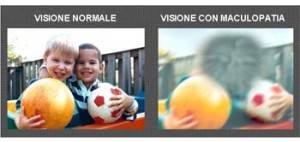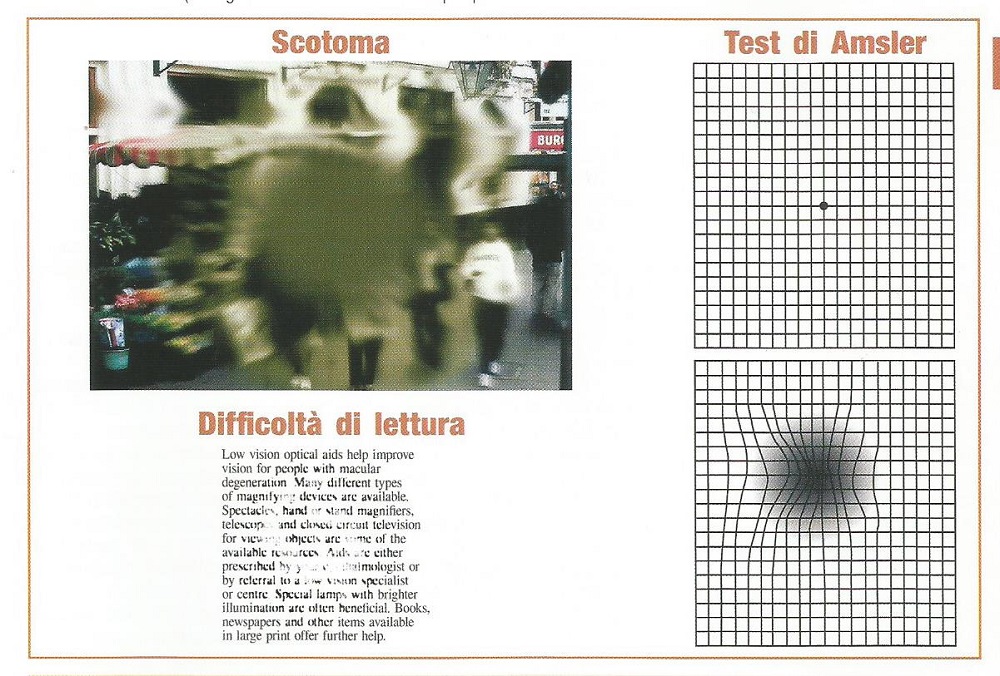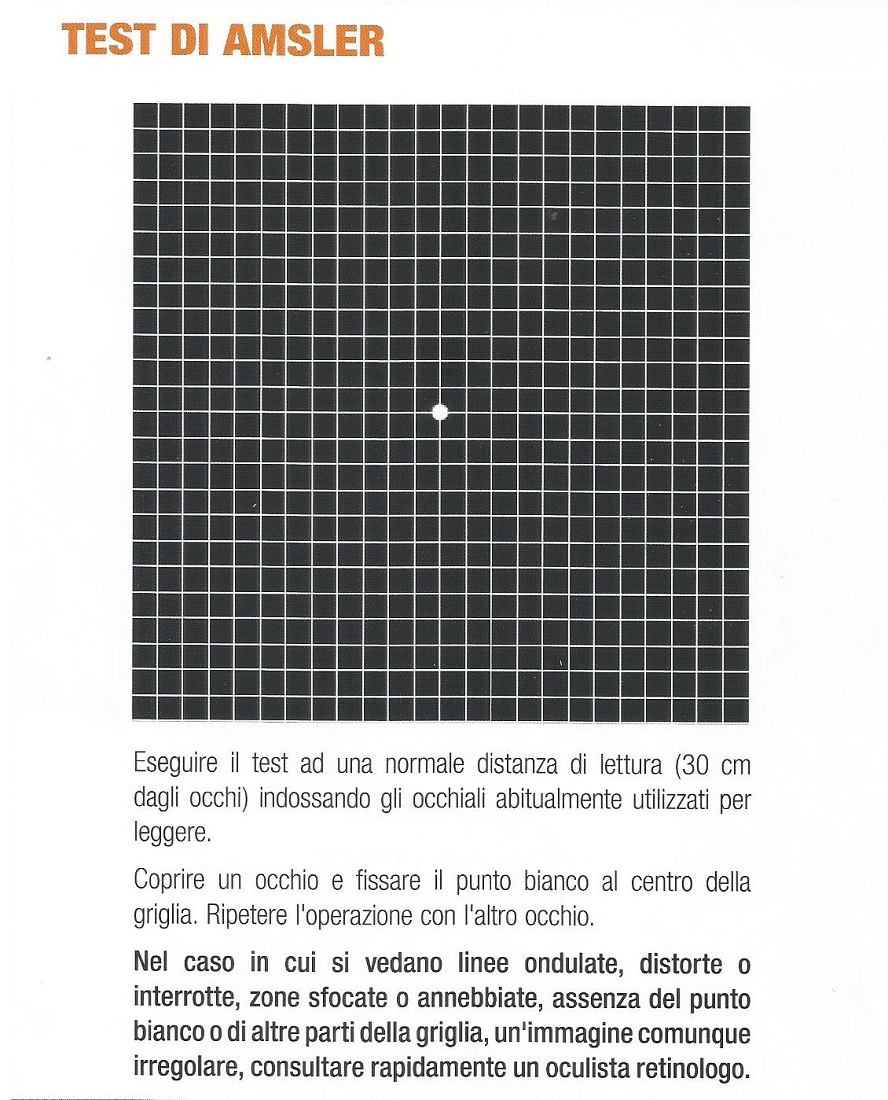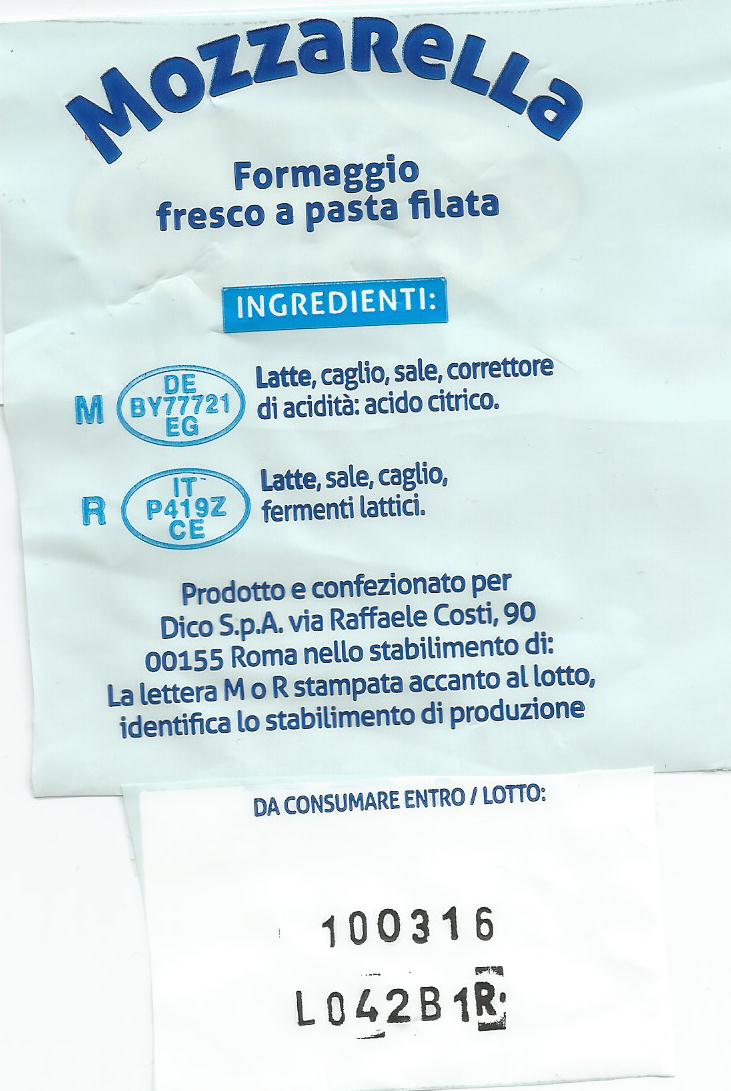Maculopatia, previeni facendo il test a casa
La degenerazione maculare senile (DMS), dopo i 55 anni di età, è la principale causa di perdita grave della visione centrale e di cecità civile.
E’ una malattia che colpisce la parte centrale della retina, la macula, che è deputata alla accuratezza visiva permettendo il riconoscimento dei particolari dell’oggetto osservato. L’attività visiva è un processo ad altissimo consumo energetico e di pigmento visivo. Con l’età questo processo potrebbe alterarsi o per esaurimento delle cellule visive (forma secca) oppure per un accumulo dei “detriti” dei pigmenti utilizzati con conseguenti gravi e irreversibili alterazioni delle cellule visive (forma umida).
Fattori di rischio sono l’età, la familiarità, il sesso femminile, la razza caucasica e il fumo, l’ipertensione arteriosa, l’eccessiva esposizione alla luce durante la vita, l’obesità ed una dieta ricca di grassi e colesterolo.
Nelle fasi iniziali la malattia può non dare sintomi, soprattutto se a essere interessato è solo un occhio.
I sintomi nella forma secca sono rappresentati da un offuscamento lento ma progressivo della visione centrale con difficoltà nella lettura, nell’infilare una chiave nella toppa, nel vedere uno schermo televisivo nel suo insieme.
Nella forma umida il sintomo fondamentale ed iniziale è costituito dalla distorsione della visione: una linea retta percepita come una gobba, le lettere appaiono deformate.
Intervenire nelle fasi iniziali della malattia è essenziale per limitarne il danno e mantenere una funzione visiva utile. Per fare ciò occorre una diagnosi precoce e per questo ci viene in aiuto il test di Amsler.
E’ un test molto semplice e pertanto facilmente eseguibile a casa. Lo scopo del test è di individuare la METAMORFOPSIA: deformazione, ondulazione, distorsione di tutto ciò che è dritto (righe, stipiti delle porte, gradini….).

Age-related macular degeneration (AMD) after the age of 55 is the leading cause of severe central vision loss and civil blindness.
It is a disease that affects the central part of the retina, the macula, which is responsible for visual accuracy allowing the recognition of the details of the object observed. Visual activity is a very energy-intensive and visual pigment process. With age, this process could be altered either by exhaustion of the visual cells (dry form) or by an accumulation of the “debris” of the pigments used with consequent serious and irreversible alterations of the visual cells (wet form).
Risk factors are age, family history, female sex, Caucasian race and smoking, high blood pressure, excessive exposure to light during life, obesity and a diet high in fat and cholesterol.
In the early stages, the disease may not cause symptoms, especially if only one eye is affected.
Symptoms in the dry form are slow but progressive blurring of central vision with difficulty in reading, in inserting a key in the lock, in seeing a television screen as a whole.
In the wet form, the fundamental and initial symptom is the distortion of vision: a straight line perceived as a hump, the letters appear deformed.
Intervention in the early stages of the disease is essential to limit damage and maintain useful visual function. To do this we need an early diagnosis and for this we are helped by the Amsler test.
It is a very simple test and therefore easily performed at home. The purpose of the test is to identify METAMORFOPSIA: deformation, undulation, distortion of everything that is straight (lines, door jambs, steps….).

Quest’opera è distribuita con Licenza Creative Commons Attribuzione – Non commerciale – Condividi allo stesso modo 4.0 Internazionale





























